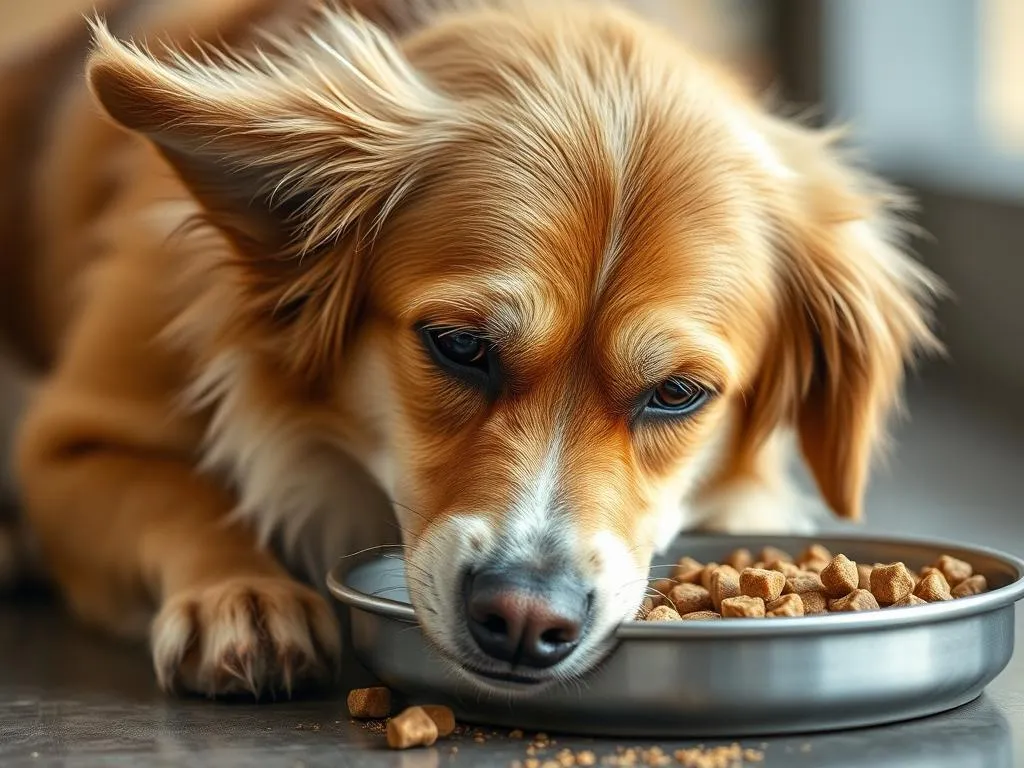
Introduction
Proper dog nutrition is crucial for the overall health and well-being of our furry companions. Just like humans, dogs require a balanced diet rich in essential nutrients to thrive. Among the various types of dog food available, dry dog food, commonly known as kibble, is a popular choice due to its convenience and shelf stability. However, not all dry dog food is created equal, and knowing how to tell if dry dog food is bad can make a significant difference in your pet’s health.
Identifying bad dog food is critical for preventing potential health issues. In this article, we will explore the basics of dog food, the signs indicating that dry dog food may have gone bad, and the impact of poor-quality food on your dog’s health.
Understanding Dog Food Basics
Types of Dog Food
When it comes to feeding your dog, there are several types of dog food to consider:
- Dry dog food (kibble): This is the most commonly used type of dog food, known for its convenience and long shelf life.
- Wet dog food (canned): Often more palatable for dogs, wet food contains higher moisture content.
- Raw diets: Some dog owners opt for raw feeding, which includes uncooked meat, bones, and vegetables.
- Homemade diets: Preparing meals at home allows for complete control over ingredients but requires careful planning to ensure nutritional balance.
Nutritional Requirements for Dogs
Dogs have specific nutritional needs that vary based on their age, size, and activity level. Essential nutrients include:
- Proteins: Vital for growth, repair, and maintenance of tissues.
- Fats: Provide energy and support cell function.
- Carbohydrates: Offer energy sources and assist in digestion.
- Vitamins and minerals: Crucial for various bodily functions, including immune health and bone development.
Understanding these nutritional requirements is key to selecting the right food for your dog.
Signs That Dry Dog Food May Be Bad
Visual Inspection
One of the first steps in assessing the quality of dry dog food is conducting a visual inspection:
- Color changes: Dry dog food should maintain a consistent color. If you notice fading or darkening, it may indicate degradation.
- Presence of mold or unusual particles: Any signs of mold or foreign particles are clear indicators that the food is no longer safe for consumption.
- Texture consistency: The kibble should feel firm and not overly crumbly or hard. Changes in texture can signal spoilage.
Smell Test
Dogs have a keen sense of smell, and you should trust your nose too. Check for:
- Off-putting odors: Fresh dry dog food should have a pleasant, mild scent. A rancid or sour smell is a red flag.
- Comparison to a fresh bag of dog food: If you have a new bag on hand, compare the smell to determine if the older bag has gone bad.
Taste Test
While not recommended for everyone, a small taste test can be informative. If you’re comfortable doing so, take a small piece of kibble:
- Caution advised: If the kibble tastes stale or has an unusual flavor, it may not be safe for your dog.
Expiration Dates and Storage Conditions
Always check the expiration date on the packaging. Additionally, proper storage methods are crucial:
- Importance of checking the expiration date: Expired food can lead to health issues, so always prioritize fresh food.
- Proper storage methods: Store dry dog food in a cool, dry place to prevent moisture absorption and spoilage.
Understanding Ingredients in Dry Dog Food
Common Ingredients
Knowing what goes into your dog’s food is essential for making informed decisions. Look for:
- High-quality protein sources: Ingredients like chicken, beef, or fish should be among the first listed.
- Grains vs. grain-free options: Some dogs require grains for energy, while others may thrive on grain-free diets.
- Fillers and artificial additives to avoid: Be wary of foods that contain excessive fillers like corn or artificial preservatives.
Reading Labels
Understanding how to read dog food labels can help you select the best options:
- How to decipher ingredient lists: Ingredients are listed in order of quantity. Higher-quality foods will have real meat or meat meals listed first.
- Understanding guaranteed analysis and nutritional statements: Familiarize yourself with the guaranteed analysis to ensure the food meets your dog’s nutritional needs.
Recognizing Red Flags
Identifying low-quality ingredients is crucial:
- Identifying low-quality ingredients: Look for vague terms like “meat by-products” or “animal fat.”
- Unusual preservatives and additives: Avoid foods with artificial colors, flavors, or preservatives, which may be harmful to your dog.
Impact of Bad Dog Food on Health
Short-Term Effects
Feeding your dog bad food can lead to immediate health issues:
- Digestive issues: Dogs may experience vomiting, diarrhea, or other digestive upset.
- Changes in energy levels: Poor-quality food can lead to lethargy or hyperactivity.
Long-Term Health Risks
The effects of bad dog food can accumulate over time:
- Nutritional deficiencies: A lack of essential nutrients can lead to developmental issues and chronic health problems.
- Potential for serious health conditions: Consistent poor nutrition may increase the risk of conditions like kidney disease, obesity, and diabetes.
What to Do If You Suspect Bad Dog Food
Immediate Actions
If you suspect your dog’s food is bad, take these immediate actions:
- Stop feeding the suspected food: Don’t wait for symptoms to appear. Remove the food from your dog’s diet.
- Consult your veterinarian for advice: Your vet can provide personalized guidance based on your dog’s health history.
Alternatives to Bad Dog Food
Transitioning to a high-quality diet is essential for your dog’s health:
- Recommendations for high-quality dog food brands: Look for brands with good reputations and transparent ingredient sourcing.
- Transitioning to a new diet safely: Gradually mix the new food with the old over a week to prevent digestive upset.
Reporting Issues
If you encounter bad dog food, it’s important to take action:
- How to report concerns to manufacturers and authorities: Many companies have customer service lines or online forms for reporting issues. You may also want to inform local health authorities.
Prevention and Best Practices
Regularly Inspecting Dog Food
Routine checks can prevent problems before they arise:
- Importance of routine checks for freshness: Make it a habit to inspect your dog’s food regularly for any signs of spoilage.
- Keeping a feeding schedule to avoid old food: Set a feeding schedule that aligns with your dog’s consumption to minimize leftover food.
Educating Yourself on Dog Nutrition
Staying informed is crucial for making the right choices:
- Resources for better understanding dog food choices: Consider books, reputable websites, and veterinarian recommendations to expand your knowledge.
- Importance of staying updated on pet nutrition research: New studies and findings can change the way we understand dog nutrition.
Choosing Quality Products
Selecting the right products can make a world of difference:
- Tips for selecting reputable brands: Research brands, read reviews, and look for certifications that indicate quality.
- Importance of consulting with veterinarians or pet nutritionists: These professionals can provide tailored advice based on your dog’s individual needs.
Conclusion
In summary, understanding how to tell if dry dog food is bad is vital for ensuring your pet’s health and well-being. From inspecting the food visually to understanding ingredients and their effects, knowledge is your best defense against poor nutrition. Prioritizing high-quality dog food and maintaining vigilance can significantly impact your dog’s quality of life. Remember, a well-informed pet owner is a responsible pet owner.
Stay proactive in your approach to dog nutrition, and your four-legged friend will thank you for it!









